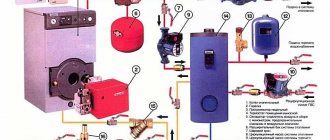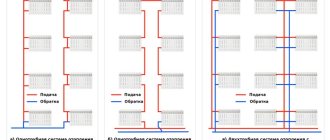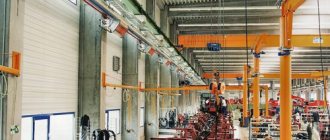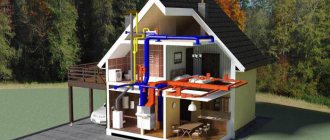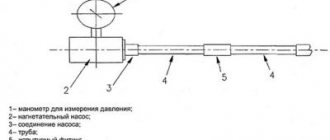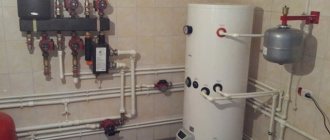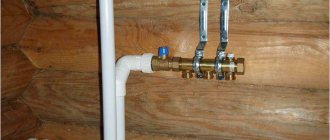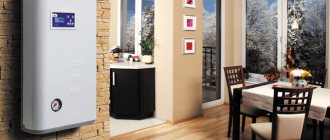Heating of warehouses, hangars, storage facilities and other similar buildings differs significantly from heating, say, residential buildings - both the overall dimensions of the room and the special requirements for the conditions of the internal microclimate play an important role.
In particular, it is usually not necessary to heat the entire warehouse, but only certain work areas and cargo storage areas, and the temperature and humidity levels in such areas can be completely different. In this regard, the issue of heating a warehouse must be approached with maximum responsibility - in order to be able to fully use the functionality of the premises.
Standard water heating, with which any of us are familiar, is of little use for heating air in such a spacious room - the heated air masses will simply rise upward into areas that are not in any way used. Accordingly, costs will increase significantly - with minimal useful returns. So, which warehouse heating system should you use? Let's try to figure it out.
Design and installation of a heating system for a warehouse and workshop
The task of any warehouse is to provide manufactured and other products with all the conditions necessary to preserve the qualities specified during their manufacture. In this case, the general nuances of the microclimate of warehouses, determined by the degree of heating, level of ventilation and humidity, are important. The role of heating is presented as effectively maintaining the correct temperature in warehouses during the cold season, since it is during this period that low-temperature effects lead to the freezing of liquids, fragile products, and damage to goods in the warehouse of biological materials.
Heating options
The selection criteria for heating systems for warehouses and workshops are presented in the technological standards and requirements specified by the sanitary, hygienic and fire department. The following types are distinguished:
- Centralized, involving the location of system sources outside the premises. They can be supplied with air, steam, water or a combined type of coolant.
- The forced heating scheme for warehouses contains pump and fan systems for heat distribution.
- Natural heating involves the circulation of heat flow in natural ways. Natural heating of a warehouse or similar premises is carried out on the principle of heat exchange between air or water coolants.
The designation criteria and the established level of safety may require a different heating option for each room.
Rules for selecting heating systems
You can get good heating by choosing the right type. Every parameter of the building is taken into account here, which include:
- area of the heated workshop and similar premises;
— the number of heated objects: rooms, workplaces (if there are requirements for such a system within the workshop);
— level of external heat exchange and heat consumption;
— compatibility with ventilation power;
— availability of free space for installation of everything necessary.
The selection and planning of the location of heating lines throughout a warehouse or workshop is carried out by strictly specialized companies that have all the necessary equipment, experience and permission to carry out these activities. These parameters become the main ones in the selection of organizations designing space heating lines.
Criteria for companies performing heating installations in workshops and warehouses
Well-organized companies always have a wide range of services and perform them professionally. Project development, planning the implementation of heating lines, installation of equipment and its commissioning must take into account standards and norms, as well as take into account the wishes of customers.
These are the goals pursued by the Moscow company Bien Group, which occupies a leading position among its competitors. Certified craftsmen with a wide range of practical skills in the field of heating installation for warehouses, as well as the overall responsibility of the company, allowed Bien Group to offer a number of advantages:
— high quality of installation work;
— work only with the best materials;
— providing a guarantee for the operation of systems according to your requirements.
Also, from Bien Group you can order work on buildings that involve the implementation of electrical, exhaust systems, water supply and drainage lines, which will not only perform their functions efficiently, but also improve economic performance.
Heating types
The main criterion for choosing a particular system is fire safety standards, sanitary, hygienic and technological requirements.
Centralized
As a rule, heating of warehouse buildings is carried out using centralized heating. A feature of such a system is the location of the heat source outside the heated premises.
Central heating system
Depending on the type of coolant used, there are steam, water, air and combined warehouse heating systems. The same types of heat supply are used for heating production workshops or hangars.
Forced
Depending on the methods of moving the coolant, there are two types of heating systems. One of them is forced circulation, for which certain mechanical devices are used - fans and pumps.
Forced heating circuit
Natural
There are also heating systems for industrial buildings with natural circulation. In this case, heating a warehouse or workshop is based on the principle of the difference in the densities of warm and cooled coolants (air or water).
Natural heating scheme
Advantages and disadvantages
The air heating method has undeniable advantages:
- The efficiency reaches 93%. When organizing heating, the installation of intermediate heating devices is not required.
- Heating systems of this type can be fully integrated with ventilation systems. This allows you to constantly maintain an optimal microclimate inside production complexes.
- Very low level of inertia. Immediately after activating the equipment, the air temperature in the room begins to rise.
- High efficiency has a positive effect on the economic performance of production and reduction in production costs.
Along with this, air heating also has obvious disadvantages:
- Constant technical maintenance of the active elements of the system is required. It is quite difficult to modernize already operating installations.
- To avoid interruptions in heat supply, a backup power source is required.
Air heating based on local fan heaters
Heating of almost any retail, warehouse or sports facility can be successfully implemented on the basis of local installations (fan heaters and air heaters). This method of implementing heating is especially relevant for small objects and objects where there is no need for a significant influx of street air.
The use of local air heaters is a universal, fast and economical solution for heating a single-volume room.
Local air heaters have different designs and can operate from any available energy source:
- Water fan heaters work with liquid coolant (water). The use of such equipment is justified when the facility has the opportunity to heat the coolant and supply it to the room;
- Gas fan heaters - can be installed outside or inside the heated room. Local gas air heaters have a sealed combustion circuit and a system for forced removal of combustion products. Can be used to create separate heated zones without heating the entire room;
- Electric fan heaters are convenient and easy to install, since there is no need for additional communications (gas pipeline, pipeline). Their use is fully justified if the only source of energy at the facility is electricity.
Heating of a football arena using GREERS fan heaters
Local air heaters can be equipped with mixing chambers for partial air intake from the street for ventilation.
Fan heater "GREERS" with mixing chamber
The cost of a heating system for a warehouse, store or sports facility usually consists of several components: the cost of preparing the facility for heating (construction of a boiler room, pipelines, etc.) and the cost of purchasing heating equipment and installation.
The use of air heating systems allows you to save significant amounts of money.
Savings during construction - no investment in the preparation and construction of a boiler room, since our equipment can simply be placed on the street. For outdoor placement, only a small area is enough. The normal operating mode of gas heat generators implies an ambient temperature of up to minus 30 degrees Celsius. There is also specially designed equipment for the Far North, which can be operated at temperatures down to minus 45 degrees.
Saving money when operating the heating system is achieved due to higher efficiency, there is no need to waste energy on heating the intermediate coolant - water, there are no leaks and the risk of defrosting the heating system, energy savings due to the “standby mode” function, i.e. maintaining a minimum positive temperature in the room without the risk of defrosting and very quickly heating the room when the need arises.
Thus, if you want to rationally use money during construction, as well as significantly save it during the operation of the heating and ventilation system, we invite you to consider the possibility of using modern technologies and equipment from leading Russian and foreign manufacturers, as well as take advantage of the experience of our engineers and specialists its design and installation of air heating systems.
will perform for you the full range of work on the design, selection, supply of equipment and installation of air heating, ventilation and air conditioning systems at the design or construction stage of your production, warehouse, sports, retail, administrative facility with high quality and on time.
Heating the air in the supply ventilation unit.
The supply unit has a block, usually with an electric heater or a water heat exchanger. The air supplied to the premises, passing through this unit, is heated and distributed through the air ducts, ventilation and heating of the premises occurs.
Air heating in a special installation (heat generator, air heater, etc.)
Heat generators
installed indoors or outdoors, their power is calculated based on the total heat losses of the object, which must be compensated by the supply of warm air. Air distribution is also carried out through air ducts. The efficiency of these installations is very high and can reach 95 – 98%. The air is heated by burning natural gas or liquid fuel with a burner, while high-temperature combustion products, passing through a heat exchanger, give off their heat to it, which in turn heats the air supplied to the premises. With this method of heating the air, it is possible to reach the temperature of the air leaving the heat generator up to +90°C.
Heat generators
have a powerful high-performance supply fan that supplies several thousand cubic meters of warm air per hour and therefore often combine air heating and ventilation when designing, thereby reducing the overall cost of the systems.
Heat generators
or air heaters have a wide range of thermal powers - from approximately 10 to 1000 or more kilowatts of thermal power and a variety of designs that allow them to be installed on the floor, on walls or under the ceiling indoors, as well as outside, next to the heated room or directly on the roof building.
Basically, heat generators “work” on a system of metal air ducts that distribute air across several rooms and over a large area at once.
Air heating on air heating devices
Air heating devices are also called water fan heaters, heating volcanoes (from the name of the manufacturing company Volcano), as well as water heaters with fans.
The principle of operation is extremely simple: the fan pumps air through a water heat exchanger-radiator. Hot coolant from the water heating system flows through the same heat exchanger. They are usually hung on the wall at a height of 4–6 m from the floor. The air flow at the outlet is warmed up and has sufficient speed so that it does not go to the ceiling, but goes down to the comfort zone. Thus, the air gives off most of the heat not to the ceiling, but to the lower part of the room.
| Advantages | Flaws |
| The system is very effective due to the fact that the warmest air is always below in the comfort zone | There is a need for a boiler room or heating networks |
| Low power consumption. | Electrical dependence, but this is common to all systems |
| Relatively low cost of equipment | Imported systems are expensive due to exchange rates |
| Low operating costs due to the ability to use relatively cheap natural gas in the boiler room | When a boiler room operates on liquid (diesel) fuel, the cost of operation increases |
| Robust design | Russian analogues are unreliable |
| Simple and quick installation, the ability to assemble an air heating system with your own hands | The risk of incompetent assembly is high, the volume of pipelines is large |
| Low inertia of the system, which allows very precise dosing of heat without overheating the room | There is a risk of the room not warming up if the equipment is placed incorrectly |
| The location of the devices is at the top, i.e. outside the working area of the floor increases the usable area of the room and reduces the risk of damage to the device during business activities | A large number of pipelines, additional coordination of IP sections |
| The system is very simple and inexpensive to automate so that the desired air temperature is maintained in the room | Increased noise from fan heaters |
| Ease of calculation of an industrial heating system and its design | More equipment and heating networks require additional maintenance |
| Small size and weight of equipment | |
| The modern and at the same time discreet design of the units allows them to be used in sales areas and other places with large crowds of people. | |
| Does not burn oxygen in the room | |
| There are no harmful and toxic emissions indoors |
Air heating system problems
When the air overheats inside a warehouse or production workshop, there is a sharp increase in heat loss through many elements: light openings, walls, ceilings, external fences.
However, the disadvantages of the air heating system stop there. Considering that the speed of the supply air in the work area is quite high, this leads to drafts and even a decrease in the comfortable stay in the room, because The heat generated by the human body increases.
If you use the system in normal mode, this will quickly lead to an increase in room temperature and an increase in heat losses due to external enclosures. Today, many enterprises, in order to reduce heating costs for warehouses, simply “underheat” them.
However, this leads to a decrease in temperature in the work area, which causes hypothermia of personnel and a decrease in the level of comfort in the room. To create comfortable conditions, it is necessary to turn the inkjet devices upward or completely remove them from the workspace. This heating method only leads to a huge loss of funds and is inappropriate for use.
A specific example of a heating problem
In fact, managing air heating systems is almost impossible; it is a spontaneous process. Therefore, to save money, enterprises reduce heating costs in warehouses and workshops. For greater clarity, you can exclude industrial buildings that operate continuously. Since the overwhelming number of enterprises operate on the principle of 1-2 shifts, five days a week.
For example, an enterprise operates in one shift. Then the heating interval will be about 5,000 hours. That is, working time is 1,100 hours, which is only 23% of calendar time. At the same time, the remaining time, and it is neither more nor less, 3,900 hours, is spent on idle heating of the premises.
If two-shift work is performed, then the working period will be up to 2,300 hours (46% of heating time). And this without downtime in production. When you add in downtime, the main reason why cooling systems are mothballed and shut down in many industrial buildings emerges, even a stable enterprise will have a hard time keeping up with such costs.
Reason for cost
The main reason for the troubles of many enterprises is obvious - an inappropriate air heating system. Since it does not support the reduction of energy costs in standby mode, it negates the use of traditional heating methods.
Of course, it is possible to transfer the chief power engineer to standby mode, but this is a very ineffective and complex process. Therefore, this method is practically not used. Another disadvantage of such heating is the possibility of defrosting the system when the outside temperature drops sharply.
If you try to reduce water consumption using a heater, this will cause an imbalance in the system and can even lead to defrosting of the heater installation and internal water pipes.
By reducing the air flow to the fan drive, it is possible to slightly reduce energy losses, but this will lead to a parallel increase in the temperature of the return network water.
In any case, this method is ineffective and will not help to significantly reduce heat consumption, because the air temperature at the outlet of the heaters will increase. And constant monitoring and correction of the air system requires the constant presence of operational personnel on staff.
Radiant heating - economical systems for large industrial buildings
To heat industrial premises, “light” and “dark” infrared heaters are installed. Natural or liquefied gas is used as a heat source. In buildings where, for some reason, gas equipment cannot be installed, suspended radiant panels are installed.
Features of the operation of different types of infrared heaters
In “light” heaters, gas is burned using a special burner, the surface temperature of which can reach 900 degrees. A hot burner provides the necessary radiation. “Dark” heaters (they are also called “pipe” heaters due to their design) are radiators with reflectors that are designed to direct radiant energy to the desired areas of the room. Tube infrared devices heat up less (up to 500 degrees) and have less harsh radiation, which significantly expands their scope of application.
Suspended radiant panels are universal, they are widely used in category, industrial and warehouse premises of all types. The systems operate using a steam/water intermediate coolant. The water in the devices heats up to 60-120 degrees, and the steam - up to 100-200. Today this is the most convenient and economical way to heat industrial premises and enterprises.
Pros and cons of radiant heating
Infrared heaters have the following undeniable advantages:
- quick heating of rooms (15-20 minutes);
- the possibility of creating warm zones in unheated rooms;
- no energy loss for heating “extra” area”;
- minimal heat loss in systems operating without coolant;
- savings on maintenance, since there is no need to change filters, check, repair pumps, etc.;
- comfortable microclimate: the air does not dry out, the floor heats up and serves as a secondary heat source.
Infrared heaters cannot be installed:
- if the ceiling height is below 4 m;
- in industries where radiation affects product quality or technological processes;
- in premises of fire categories A, B.
How does an infrared heater work?
Infrared heating systems for industrial premises are more economical and convenient to use than air heating systems. Radiant heating devices do not contribute to the spread of dust, create thermal zones at the height of human growth, and do not dry out the air. The radiation heats the floor, making people in the rooms feel more comfortable. At the same time, there are buildings where radiant heating is not applicable, and for them air heating will be optimal.
Air-thermal curtains
Air curtains are designed to separate zones with different temperatures on both sides of open openings of working windows, entrance doors and gates. By supplying a high-speed air flow, an invisible curtain is formed, which not only prevents warm air from escaping outside, but also prevents cold air from entering the room. This improves the temperature regime and maintains more comfortable working conditions for people and equipment, significantly reducing heat loss and, consequently, heating costs. Moreover, air curtains isolate rooms from dust, exhaust gases, etc. harmful factors, without creating an obstacle to the movement of vehicles.
To improve the internal microclimate and additionally heat the premises, many models have been developed for heating air curtains with various heat exchangers (with hot water or steam supply). The air curtain design may include an air filter. The speed of the air flow and the degree of its heating are regulated using a remote control or a remote thermostat.
Horizontal and vertical thermal curtains General, located at the doorways of the entrance to the building
Air curtains are usually installed above the entrance to the room, on the inside above the gates or doors. If there are large openings, it is necessary to install several curtains close to one another, thereby creating a continuous and continuous air flow. When it is impossible to place the curtains directly above the doors, they are installed vertically, to the side of the gate.
Among the main parameters characterizing specific models of thermal curtains, we note the most significant: heating power (kW), air capacity (m3/h), curtain length (usually from 0.6 to 2.5 m), type of heater used. When selecting equipment, it should be taken into account that the length of the curtain must be no less than the width of the doorway. When installing air curtains, the temperature in the room must meet the requirements of SNiP 2.04.05-91. The temperature of the air supplied by thermal air curtains should not exceed 50 °C at external doors and gates. The design temperature of the air mixture entering the room through external doors, gates and openings should be taken from 5 to 14 °C, depending on specific conditions. The speed of air release from the openings of air-thermal curtains should be no more than 8 m/s at external doors and no more than 25 m/s at gates and technological openings. The air flow must be fast enough to reach the floor
Air-thermal curtains can be effectively used at gates and openings in the external walls of premises that do not have vestibules and are opened more than five times or for at least 40 minutes per shift in areas with an estimated outside air temperature of minus 15 °C and below; at gates and doors of air-conditioned rooms.
Heating with mobile fan heaters or heat guns
The principle of operation of heat guns is simple: air from the room is forced by a fan onto the heating element and the already warm air enters the room. The heating element is either an electric heating element, a diesel burner, or a liquefied or natural gas burner. Sometimes direct heating guns are used, and fuel combustion products enter the room along with the heated air.
Advantages: mobility – guns are relatively easy to move and do not require installation; relatively low price of equipment; high heating efficiency.
Disadvantages: the most expensive types of energy are used: electricity, diesel fuel, liquefied gas; the presence of toxic combustion products in the indoor air can lead to poisoning of personnel; the outgoing air flow heated to excessively high temperatures can lead to a fire; the location of air heaters at the bottom can lead to their accidental damage during business activities; occupy a significant part of the usable area of the room; system management is difficult to automate, which requires constant monitoring by personnel.
Thus, the use of mobile air heaters is justified only in cases where non-permanent or temporary heating is required. The use of guns for constant heating leads to excessive fuel costs and a decrease in the fire safety of premises.
Heating devices
There are the following main types of heating devices for central heating systems (water and steam): sectional and panel radiators, smooth-tube devices (with a smooth surface), convectors, finned pipes. In warehouses, central water and steam heating systems use heating devices only with a smooth surface that allows easy cleaning.
When choosing heating devices, you should take into account the calculated thermal power of each heating device, the pressure in the system, the quality of the coolant and the heat supply circuit, the composition of the air environment of the room (uncoated steel pipes cannot be used in rooms where there are substances in the air that are aggressive towards metals).
Heating devices must provide uniform heating of the room and be placed so that they remain freely accessible for inspection, cleaning and repair. In warehouses of categories A, B and C they should be placed at a distance of at least 100 mm from the walls. Placing heating appliances in niches is not allowed.
In warehouses of categories A, B and C, where cylinders with compressed or liquefied gas are stored, heating devices should be protected with screens made of non-combustible materials, providing free access to them for cleaning. Screens are installed at a distance of at least 100 mm from heating appliances. In rooms where batteries are located, water or steam heating is performed using smooth pipes connected by welding. Flange joints and installation of valves are not allowed. When the coolant temperature is above 100 °C, heating devices must be separated from combustible elements of the building by at least 100 mm. Installation of heating devices in warehouses is carried out in accordance with the requirements of SNiP 2.04.05-91, SNiP 21-01-97, PPB 01-98.
Steam heating of industrial buildings
Heating the production premises using steam allows you to maintain a high temperature of the environment (up to 100 degrees). When organizing the heating process, you do not need to take into account the number of floors. You can bring the temperature to the required value in a short time. This applies to both heating and cooling. All equipment, including communications, does not take up much space.
The steam heating method is optimal if the production premises need to be heated or reduced in temperature periodically. The method is more effective than the water method.
The following disadvantages are identified:
- there is a lot of noise during operation;
- it is difficult to regulate steam flow;
- The steam method is not recommended for use in rooms with aerosols, flammable gases, or heavy dust.
Steam systems
In steam heating networks, saturated water steam with a temperature of up to 130 °C is used as a coolant. It circulates through a network of radiators, giving off heat and condensing. The resulting condensate returns to the heat exchanger by gravity or is pumped by pumping equipment.
Advantages of warehouse steam heating:
- low level of heat losses in heat exchangers;
- low inertia of the heating system due to rapid heating of radiators;
- relatively low level of hydrostatic pressure;
- small dimensions of thermal equipment.
The disadvantages of steam systems include a decrease in efficiency due to heat losses in steam lines, noisy operation of the system, and intense corrosion processes on metal parts. Also, the high coolant temperature, which does not fall below 100 °C, imposes its limitations. Installation of steam systems in warehouses that release volatile flammable substances, flammable or toxic dust into the air is not allowed.
Types of warehouse heating systems
Let's take a closer look at the main design features and operating principles of each of the warehouse central heating systems in order to identify their positive characteristics.
Central heating systems for warehouses are divided according to the type of coolant used in them: steam, air, water. There are also combined types of systems - water-air, steam-water, steam-air and others. Now about each of the systems in more detail.
The coolant in steam heating systems for warehouses is dry saturated water vapor. The advantages of the system under consideration include the absence of heat loss in heat exchangers, low inertia and rapid heating of heating devices during startup, as well as low hydrostatic pressure created in the warehouse heating system. However, this system also has its drawbacks, for example, increased heat losses of steam pipelines, which does not have the best effect on efficiency, and intense corrosion of pipelines, which reduces their service life.
Warehouse steam heating systems are divided by the method of condensate return (open or closed) and by pressure (vacuum-steam systems in which the pressure is less than 0.1 MPa), high pressure (up to 0.27 MPa) and low pressure (up to 0. 17 MPa). In open steam heating systems for warehouses, the condensate formed in the heating devices is supplied to the heat source by a pump, and in closed ones it is returned by gravity. The maximum steam temperature should not exceed 130°C.
Air heating of warehouses is by far the most common way to maintain the required temperature in premises. This is explained by several factors: an air heating system for warehouses can be combined with a supply ventilation system, and this allows you to receive not only heat, but also fresh air. The air heating system for warehouses shows high efficiency (efficiency up to 95%), it does not have an intermediate coolant, and it heats the air quickly and intensively. The profitability of an air heating system for warehouses is obvious, and the payback will not take long to arrive.
An undoubted advantage of the air heating system for warehouses over analogues is the ability to fine-tune and automate the air heating process, due to which exactly as much heat is generated as needed. Warehouse air heating systems are installed both with and without air ducts. A notable feature of these systems is the ability to evenly heat the air even in buildings with high ceilings; however, the air jets (which can be overlaying or non-overlaying) must be properly adjusted.
Warehouse water heating systems are characterized by a heat transfer fluid, which can be water, or water-based antifreeze. The warehouse heating systems under consideration are divided into natural and mechanical (according to the method of inducing water movement), single-pipe and two-pipe (according to the connection scheme of heating devices with heating pipes), water heating systems for warehouses with upper and lower distribution (according to the location of the lines) and others.
The natural water heating system for warehouses is used mainly in facilities with a small area, because in large warehouses with low efficiency such a system will not be enough. You can often find combined water heating systems for warehouses; this solution is justified: mechanical heating has a high efficiency rate, and natural heating requires virtually no energy costs.
Air systems
Air heating of a warehouse is one of the most popular heating methods. It is well suited for hangar-type buildings with a large area and significant height. Air is used as a coolant, which is heated by a heater to a given temperature. The heated air masses are forced by a fan into the air duct system, through which they are distributed throughout the warehouse.
The types of air distribution devices and their locations are determined by the characteristics of the building. There should be no structural barriers in the path of the warm air flow. In buildings with ceiling heights of up to 8 meters, the air is distributed by non-surface jets, which are formed at a height equal to 35-65% of the total height of the room. At a height of more than 8 meters, air distribution is carried out by spreading jets. They are formed at a height of 85% of the total height of the room and laid on the ceiling.
Warehouse heating with fan heaters has the following advantages:
- Efficiency up to 95%;
- low heating inertia - the room warms up almost immediately after the system starts;
- extensive automation capabilities;
- Possibility of integration into the ventilation system.
Choosing a system for heating industrial premises
Heating of industrial premises is carried out using different types of systems, each of which requires detailed consideration. Centralized liquid or air systems are the most popular, but local heaters can also often be found.
The choice of heating system type is influenced by the following parameters:
- dimensions of the heated room;
- the amount of thermal energy required to maintain the temperature regime;
- ease of maintenance and availability of repairs.
Each system has its pros and cons, and the choice will primarily depend on the compliance of the functionality of the selected system with the requirements that apply to it. When choosing the type of system, it is necessary to calculate the heating system of an industrial building in order to have a clear understanding of how much heat the building needs.
Infrared Ceiling Water Panels
One of the most popular methods of local heating and cooling in the premises of large and medium-sized enterprises is infrared ceiling water panels. The method for producing infrared radiation in them is clear from the name: a liquid circulates through pipes enclosed in an aluminum shell (reflector), heated or cooled to a temperature that provides a sufficient level of radiation. Moreover, different types of liquids with corresponding physical characteristics can be used for heating and cooling.
Advantages: high productivity, as well as safety for human life and the environment; water is heated centrally, with heat distributed due to the active circulation of a special liquid through the pipes; heat flow can be adjusted, heaters operate silently, energy consumption is minimal; safe for health and environmentally friendly, easy to install and dismantle; have a direct and remote control system that turns off the heating when a violation of the cyclic movement of liquid or other malfunction occurs in the system.
Disadvantages: in the case of using main natural gas, heating will require a complex and branched gas supply system, which is extremely expensive both in installation and in design.
A feature of any infrared heating and, in particular, infrared ceiling water panels is that only a certain area in the room to which the radiation is directed is heated. In the rest of the space the temperature may even be below zero. Thus, infrared ceiling water panels are successfully used not only in industrial enterprises and warehouses, but also for heating open verandas at winter ski resorts, ice palaces and other places where it is necessary to provide appropriate conditions for comfortable work of people.
The solution to the problem is infrared systems
An effective and quick solution to the above problems are long-wave infrared heating systems for warehouses, hangars and workshops.
Such systems support a variety of coolants: water, gas and steam.
Principle of operation
The system operates on the principle of infrared heat transfer between objects: the body emits waves, and they heat the selected surface. The higher the temperature of the radiating body, the stronger the infrared radiation.
Depending on the coolant, heat is generated inside the heating system, which is directed using special reflectors and a heater to the heated object: the floor, equipment or people.
This method has many advantages:
- Lack of convective air flows.
- Quickly warms up to the desired temperature.
- Possibility of local heating.
The use of infrared heating results in savings of 45% of energy used compared to traditional methods.
Selecting a warehouse heating system
In the modern world, the construction of warehouses is not complete without such special work as installing a ventilation system, installing a heating system, and electrical wiring. One of the main types of work is the design and installation of a heating system. The heating system itself is a set of technical elements designed to receive, transfer and transmit to all heated rooms the amount of heat necessary to maintain the temperature at a given level. The need to resolve this issue lies in the desire to maintain the quality of the products. When drawing up a warehouse heating project, you should remember that all devices must be accessible for repair and maintenance.
Classification, applications, selection
The heating system is a set of technical elements designed to receive, transfer and transmit to all heated rooms the heat necessary to maintain the temperature at the required level. Heating systems are divided into local and central. Local heating systems are those in which a heat generator, heat pipes and heating devices are structurally combined into one device (stove, gas and electric heating). Due to the specific nature of warehouse operations, local heating is not used here.
To heat warehouses, central heating is used - a system in which a heat generator, for example a boiler, is located outside the heated premises, and the coolant from the generator is supplied to points of consumption through pipes. Central heating systems, depending on the type of coolant, are divided into water, steam, air heating systems and combined - steam-water, water-water, steam-air, water-air, etc. Depending on the method of moving the coolant, central systems can be made with natural circulation due to the difference in the densities of the cooled and heated coolant (water or air) or with forced circulation mechanically: pumps in water systems and fans in air systems. Heating systems and coolant are selected in accordance with technological requirements, as well as the requirements of sanitary, hygienic and fire safety standards. The corresponding requirements are established by departmental regulatory and technical documents - GOST 12.1.005–88, SNiP 21-01-97 “Fire safety of buildings and structures”, PPB 01-98 “Fire safety rules in the Russian Federation”, SNiP 2.04.05.-91 .
When choosing a warehouse heating system, it is necessary to take into account the following requirements of SNiP 2.04.05-91 (depending on the explosion and fire hazard category of premises of categories A, E, B, D and D):
- In warehouses of categories A, B and C, without emission of dust and aerosols, air, water and steam heating systems are used (water and steam - at a water coolant temperature of 150 °C, a steam coolant temperature - 130 °C). In the same rooms, but with the release of dust and aerosols, the maximum temperature should be 110 ° C in rooms of categories A and B, 130 ° C for rooms of category B. Water and steam heating are not allowed in rooms where substances that form upon contact are stored explosive mixtures with water or water vapor, or substances capable of spontaneous combustion or explosion when interacting with water (requirement for premises of categories A and B).
- In warehouses of categories D and D, air, water and steam heating are used without the release of dust and aerosols. Coolant temperature - water - 150 °C, steam - 130 °C. In the same rooms with increased requirements for air purity, air and water heating is used with a water temperature of 150 ° C and with radiators without fins.
To heat working, utility and auxiliary premises of warehouses, basically the same heating systems are used as for warehouses. For this purpose, electric heating devices can be used - oil radiators, which must be powered from an independent electrical network with starting and protective devices and be equipped with working thermostats or similar devices.

